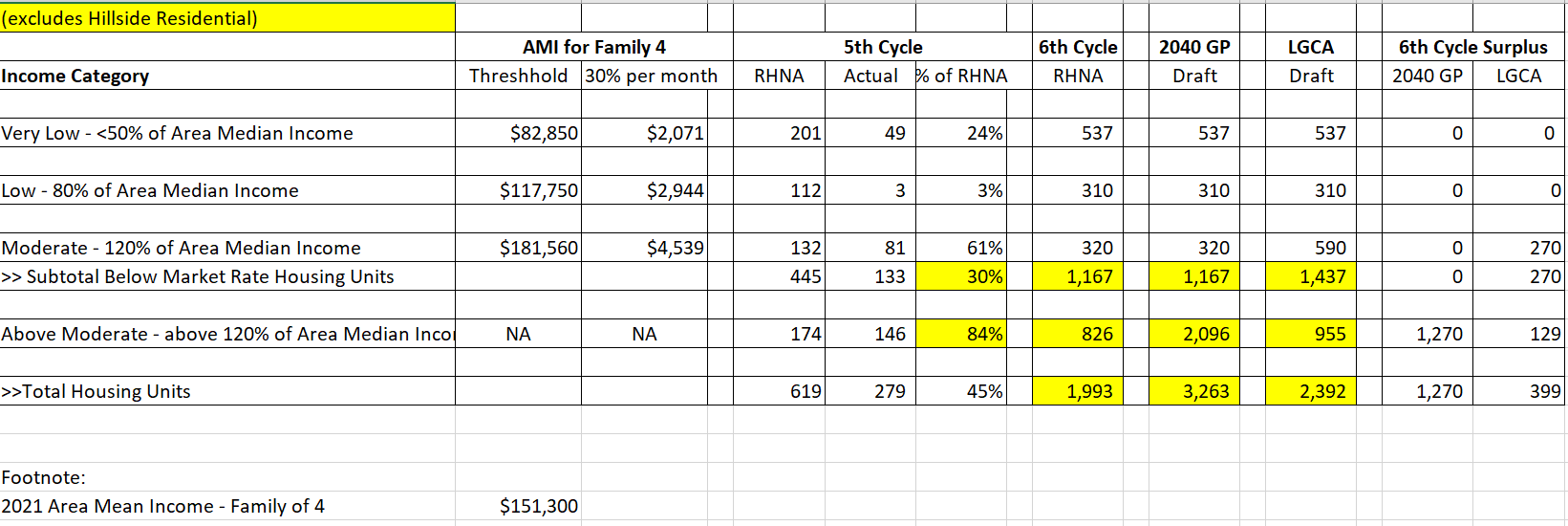“Cities have the capability of providing something for everybody, only because and only when, they are created by everybody” – Jane Jacobs
The General Plan is more than a legal underpinning for land use decisions; it reflects the community’s priorities and values, and it is a vision about how the community will grow in the context of those priorities and values. What makes Los Gatos special is its small-town atmosphere, unique physical setting, history, and vibrant community character that projects the Town as a safe, charming, and aesthetically pleasing place to call home. The desire to grow and expand the Town’s high quality of life is demonstrated by extensive citizen participation in many service groups and community issues.
While residents may disagree over specific issues, they share a common vision of the future of Los Gatos. Residents are resolute in their desire to maintain a high quality of life, celebrating and preserving the character of the Town while embracing change that comes from future needs. This will require a balanced approach to planning for growth which is focused on keeping the Town unique, vibrant, and livable on the one hand, while addressing future development in a thoughtful way where residents can have access to affordable housing, employment, transit, and retail services that can meet their daily needs.
It is with this overarching goal of seeking balance between our history and our future, in a Town that is almost fully developed, that we offer the following specific comments about the 2040 General Plan.
- The 2040 General Plan growth needs to be revised downward to accommodate only the anticipated 6th cycle RHNA required growth of 1,993 units plus a 20% buffer. The 2040 General Plan therefore should reflect a potential buildout of 2,392 new units.
The 2040 General Plan currently reflects 3,904 new units (excluding hillside development) being added over the next 20 years. This is not supported by any population forecast prepared by DOF or ABAG. The draft 2040 General Plan’s inclusion of this excessive proposed growth in housing has driven material, Town-wide changes in land use designations, zoning densities and lot coverage ratios that are not necessary and would not be required if planned growth was more reasonable and more targeted to produce affordable housing in particular locations that the Town can make attractive to development. We all agree that zoning plans must accommodate future growth and be sufficient to ensure redevelopment is financially feasible. The State of California plans new housing in 8-year cycles. The general plan should reflect this 8-year planning cycle (i.e., 2023-2031) and be amended every eight years when new information and future RHNA allocations become known. This thoughtful approach assumes that incremental change is best and is made only when new information is available.
- The center point of the 2040 General Plan must be about creating policies and a mix of mandates and incentives to develop more AFFORDABLE housing in places attractive to development as opposed to simply more housing. When few sites are available and land costs are high, developers will develop land for its best use, targeting housing at the higher end of the income spectrum.
Our proposal calls for the development of 1,437 below market rate (BMR) housing units. This is 23% more than the 6th cycle RHNA allocation for BMR, with total housing exceeding the total RHNA allocation by a 20% buffer. By comparison the current draft 2040 General Plan does not commit to any level of BMR housing even though the total units being planned are 64% more than the total 6th cycle RHNA allocation. The Town’s historical performance in meeting the BMR RHNA allocation is very poor. For the 5th cycle, the Town so far (there are 2 years left) has achieved only 30% of the BMR target while achieving 84% of the above moderate income housing target. This substantiates the point that, faced with very high land costs and high material and labor costs to build, developers will build housing targeted to higher income levels. Please see the attached “Analysis Housing Units by Income Category” for our plan of housing units by income category. Affordability requirements and proper development incentives (such as inclusionary zoning and density bonuses) can deliver affordable, income restricted housing.
- The 2040 General Plan should incorporate the concept of opportunity areas originally outlined in the Preferred Land Use Alternative and approved by the Town Council to concentrate future affordable development where residents can access employment, transit, and retail services within a “walkable distance” (i.e., ½ mile not 1 mile to a destination).
We believe strongly that new housing should be built where it will best support economic, social, and environmental priorities. The 2040 General Plan abandons the Town Council’s previously adopted Preferred Land Use Alternative. Fundamental to this change was a significant increase in market rate housing over what was required by RHNA resulting in a shift of development from opportunity zones to a Town-wide redevelopment strategy. The DEIR showed that this change in redevelopment strategy, coupled with the lack of new employment opportunities, increased VMT and GHG to unacceptable levels that cannot be mitigated. A focused development strategy around accessible opportunity areas will give the Town the best opportunity to meet the affordable housing goals and will also enable the Town to meet the State’s goals in reducing VMT and GHG over the next 20 years. A simple rule of thumb is to concentrate affordable housing in high opportunity areas where increased densities would be allowed and make sense.
- The Housing Element must be prepared simultaneously with both the Land Use Element, and Community Design Element to ensure internal consistency of all the elements and provide residents with a complete understanding of the 2040 General Plan.
Currently the draft 2040 General Plan does not include an updated Housing Element but rather incorporates an outdated 2015 Housing Element that was built on the 5th cycle RHNA allocation. There are no substantive changes being proposed to the Housing Element as part of the 2040 General Plan. This is a major failing. Given that the 2040 General Plan defines the policy framework by which the Town’s physical and economic resources are to be managed and used for the next 20 years, the General Plan must be complete with all elements updated to ensure internal consistency. Only then should the 2040 General Plan be adopted. It is simply too important a document to be developed piecemeal. Only the Housing Element needs to be approved by the State, and this is not due until 2023. There is sufficient time to prepare a complete, well-integrated 2040 General Plan.
- A Fiscal Impact Analysis (FIA) needs to be prepared to estimate the fiscal impacts of full buildout of the 2040 General Plan.
New development brings increased demands on local government services and infrastructure, but also generates new revenues for local government through additional taxes and fees. A fiscal impact analysis of these increased expenditures and revenues would help to evaluate whether the proposed development would generate sufficient new fiscal revenues to cover the fiscal costs associated with provision of public services over the 20-year planning horizon. This is also consistent with the General Plan’s guiding principles of fiscal stability/responsibility. Without completing a FIA, it cannot be known if the 2040 General Plan is fiscally stable. The 2040 General Plan should not be adopted until the full economic impacts of it are known and publicly disclosed.
We appreciate the opportunity to submit these comments on the 2040 General Plan. We want to also publicly acknowledge the countless hours and hard work that GPAC and Staff have spent on creating the current draft 2040 General Plan. It is a good starting point for sure, but we believe substantive changes are required.
We look forward to having an opportunity to further discuss our thoughts with each Council Member and working constructively together to develop a 2040 General Plan that the Town’s residents will overwhelmingly support.
Los Gatos Community Alliance


Barbara Dodson
Excellent comments. Thank you so much for putting this together.